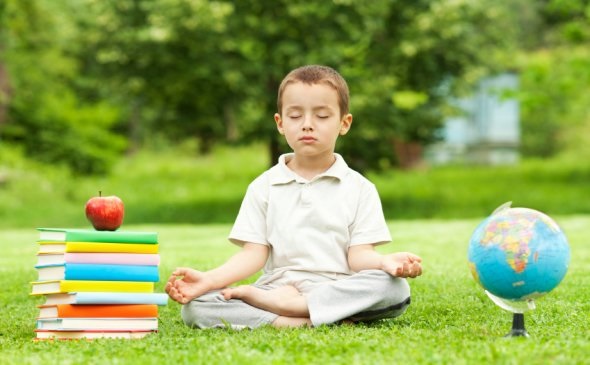Mindfulness and Autism Spectrum Disorder

Autism spectrum disorder (ASD) is generally characterized by social and communication difficulties and by repetitive behaviors. Although anxiety is not considered a core feature of ASD, between 42-79% of children with a diagnosis of ASD also have a comorbid diagnosis of an anxiety disorder1. Anxiety can manifest in restlessness, irritability, insomnia, sleepiness, or intense fear. Continued anxiety can also manifest into phobias such as fear of objects or situations and panic attacks involving intense fear that peaks and then subsides. Children with ASD often engage in challenging behaviours such as aggression, self-injury, increased self-stimulation and tantrum behaviour when anxious. Triggers such as sensory overload, social and communication difficulties, change or uncertainty can evoke high levels of anxiety in children with ASD. Continuous high levels of anxiety and challenging behaviours can have many consequences, impacting the individual’s self-esteem, quality of life for themselves and their caregivers, and maintaining meaningful relationships in society.
Practicing mindfulness has been found to help alleviate some of the challenging behaviours associated with ASD by helping children to develop a more attuned mind-body awareness and learn more adaptive coping mechanisms for anxiety. But what exactly is mindfulness?

Mindfulness refers to the awareness that arises from paying attention, on purpose, in the present moment in a non-judgmental way2. So, how exactly can mindfulness help alleviate challenging behaviours and anxiety in children with ASD?
Sensory Processing

The autistic brain sometimes struggles to receive and respond to information collected through the senses. Some people with ASD are hypersensitive to certain stimuli, where the slightest pitch higher in an everyday noise or brightness in light may cause serious discomfort and cause them to feel anxious, stressed, or overwhelmed. Over time, if these sensations become too much, this can lead to sensory overload. When someone with ASD feels this way, they may act out in challenging behaviour or flee as a way of escaping these sensations. Mindfulness can help reduce these sensations by bringing awareness to other stimuli that are not as overwhelming, such as the feeling or sound of their own breath. When practiced over time, it can also help individuals with ASD see negative sensations as something neutral, and to accept thoughts, smells, or sounds as they come in, without holding on to them.
Emotion Regulation
Individuals with ASD have difficulty regulating their emotions. They also have difficulty using language or other means of communication for social control, to express emotions, or seek assistance, therefore they use other coping strategies to regulate how they feel. For example, what some may regard as challenging behaviours, such as repetitive motor behaviours (rocking, hand flapping, finger flicking), vocalizing to block out aversive sounds and avoiding certain people, activities, or settings, are in fact, an individual with ASD way of self-regulating. Mindfulness can help children with ASD become more aware of their emotions, accept them without judgment, and realize that their negative feelings will pass. This insight helps them develop a more adaptive and non-reactive mindset and learn more adaptive emotion regulation strategies.

One mindfulness technique, the ‘Soles of the Feet’ method has recently been shown to significantly reduce challenging behaviour in ASD through learning self-management strategies3. This method involves teaching them to shift their attention from the emotional trigger to a neutral part of the body like the soles of their feet. Once they have done this, you can ask them to really feel their soles, and to think about how they feel in their shoes or on the carpet. Ask them to wiggle their toes and notice the difference sensations. This technique helps calm and clear their mind during stressful and stimulating situations, allowing them to focus specifically on the soles of their feet and therefore reduces the need to act out and engage in challenging behaviour. With continued practice, children with ASD can develop lifelong skills to effectively manage the disorder through self-regulation, thereby improving overall quality of life and wellbeing.
Yours Sincerely,
The Motus Movement.
- Kerns, C. M., Renno, P., Storch, E. A., Kendall, P. C., & Jeffrey, J. (Eds.). (2017). Anxiety in children and adolescents with autism spectrum disorder: Evidence-based assessment and treatment. Academic Press.
- Purser, R. (2015). The myth of the present moment. Mindfulness, 6(3), 680-686.
- Singh, N. N., Lancioni, G. E., Manikam, R., Winton, A. S., Singh, A. N., Singh, J., & Singh, A. D. (2011). A mindfulness-based strategy for self-management of aggressive behavior in adolescents with autism. Research in Autism Spectrum Disorders, 5(3), 1153-1158.